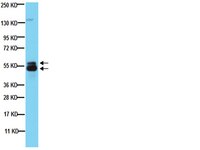Partially purified components of Nardostachys chinensis suppress melanin synthesis through ERK and Akt signaling pathway with cAMP down-regulation in B16F10 cells.
Ji Yeon Jang,Ha Neui Kim,Yu Ri Kim,Woo Young Choi,Yung Hyun Choi,Hwa Kyoung Shin,Byung Tae Choi
Journal of ethnopharmacology
137
2010
Afficher le résumé
Ethnopharmacological relevance Nardostachys chinensis has been used in folk medicine to treat melasma and lentigines in Korea. We investigated the inhibitory activities of Nardostachys chinensis in melanogenesis and its related signaling pathway. | 21816215
 |
Inhibitory effects of 1-O-methyl-fructofuranose from Schisandra chinensis fruit on melanogenesis in B16F0 melanoma cells.
Eun Young Oh,Ji Yeon Jang,Yung Hyun Choi,Young Whan Choi,Byung Tae Choi
Journal of ethnopharmacology
132
2009
Afficher le résumé
1-O-methyl-fructofuranose (1-O-MFF) from the fruit of Schisandra chinensis is a traditional Korean medicinal herb that has a variety of beneficial properties. The effect of purified 1-O-MFF on melanogenesis including the activation of related signaling pathways was investigated. | 20723590
 |
MAP kinase links the transcription factor Microphthalmia to c-Kit signalling in melanocytes.
Hemesath, T J, et al.
Nature, 391: 298-301 (1998)
1998
Afficher le résumé
Germline mutations at loci encoding the transcription factor Microphthalmia (Mi), the cytokine receptor c-Kit, or its ligand Steel factor (S1) result in strikingly similar defects in mast cell and melanocyte development. Here we describe a biochemical link between Kit signalling and the activity of Mi. Stimulation of melanoma cells with S1 results in activation of MAP kinase, which in turn phosphorylates Mi at a consensus target serine. This phosphorylation upregulates Mi transactivation of the tyrosinase pigmentation gene promoter. In addition to modulating pigment production, such signalling may regulate the expression of genes essential for melanocyte survival and development. The pathway represents a new application of the general MAP kinase machinery in transducing a signal between a tissue-specific receptor at the cell surface and a tissue-specific transcription factor in the nucleus. | 9440696
 |










